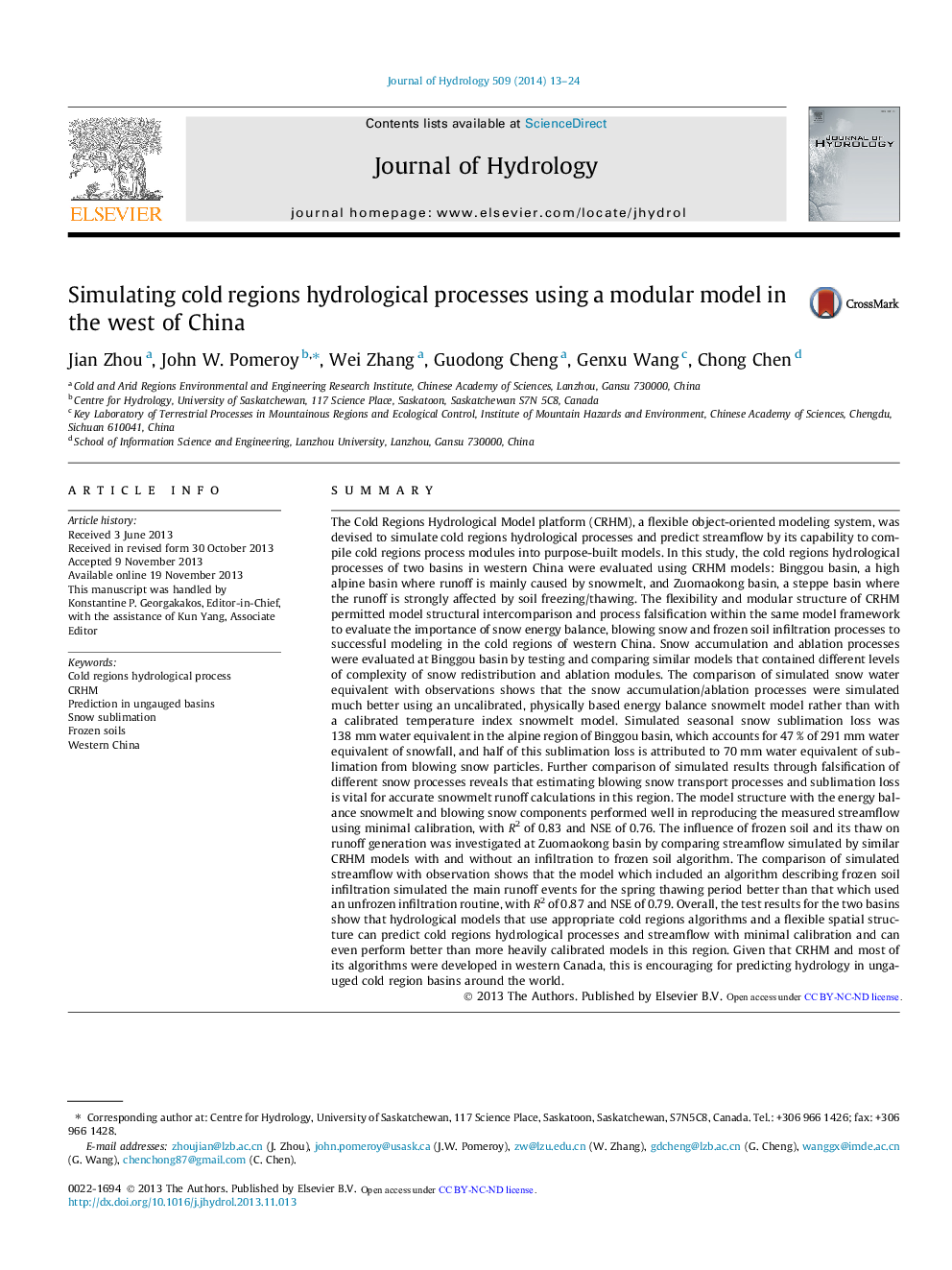| کد مقاله | کد نشریه | سال انتشار | مقاله انگلیسی | نسخه تمام متن |
|---|---|---|---|---|
| 6413384 | 1629939 | 2014 | 12 صفحه PDF | دانلود رایگان |
- The modular modeling method was used to develop CRHM.
- We investigate snow accumulation/ablation and snowmelt-runoff processes with CRHM.
- We simulate the influence of frozen soil and its thaw on runoff with CRHM.
- CRHM is encouraging for predicting hydrology in ungauged cold regions basins.
SummaryThe Cold Regions Hydrological Model platform (CRHM), a flexible object-oriented modeling system, was devised to simulate cold regions hydrological processes and predict streamflow by its capability to compile cold regions process modules into purpose-built models. In this study, the cold regions hydrological processes of two basins in western China were evaluated using CRHM models: Binggou basin, a high alpine basin where runoff is mainly caused by snowmelt, and Zuomaokong basin, a steppe basin where the runoff is strongly affected by soil freezing/thawing. The flexibility and modular structure of CRHM permitted model structural intercomparison and process falsification within the same model framework to evaluate the importance of snow energy balance, blowing snow and frozen soil infiltration processes to successful modeling in the cold regions of western China. Snow accumulation and ablation processes were evaluated at Binggou basin by testing and comparing similar models that contained different levels of complexity of snow redistribution and ablation modules. The comparison of simulated snow water equivalent with observations shows that the snow accumulation/ablation processes were simulated much better using an uncalibrated, physically based energy balance snowmelt model rather than with a calibrated temperature index snowmelt model. Simulated seasonal snow sublimation loss was 138Â mm water equivalent in the alpine region of Binggou basin, which accounts for 47 % of 291Â mm water equivalent of snowfall, and half of this sublimation loss is attributed to 70Â mm water equivalent of sublimation from blowing snow particles. Further comparison of simulated results through falsification of different snow processes reveals that estimating blowing snow transport processes and sublimation loss is vital for accurate snowmelt runoff calculations in this region. The model structure with the energy balance snowmelt and blowing snow components performed well in reproducing the measured streamflow using minimal calibration, with R2 of 0.83 and NSE of 0.76. The influence of frozen soil and its thaw on runoff generation was investigated at Zuomaokong basin by comparing streamflow simulated by similar CRHM models with and without an infiltration to frozen soil algorithm. The comparison of simulated streamflow with observation shows that the model which included an algorithm describing frozen soil infiltration simulated the main runoff events for the spring thawing period better than that which used an unfrozen infiltration routine, with R2 of 0.87 and NSE of 0.79. Overall, the test results for the two basins show that hydrological models that use appropriate cold regions algorithms and a flexible spatial structure can predict cold regions hydrological processes and streamflow with minimal calibration and can even perform better than more heavily calibrated models in this region. Given that CRHM and most of its algorithms were developed in western Canada, this is encouraging for predicting hydrology in ungauged cold region basins around the world.
Journal: Journal of Hydrology - Volume 509, 13 February 2014, Pages 13-24
